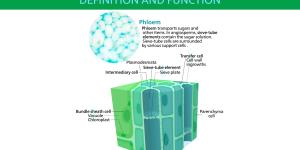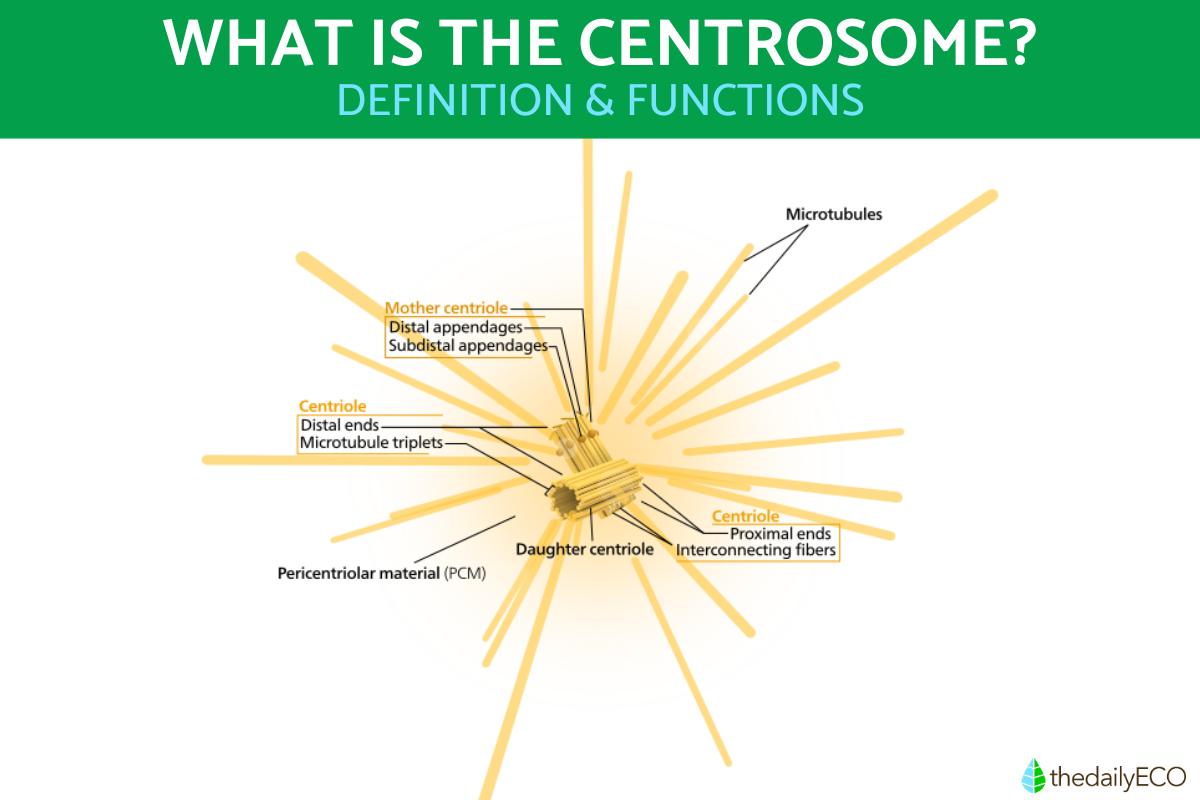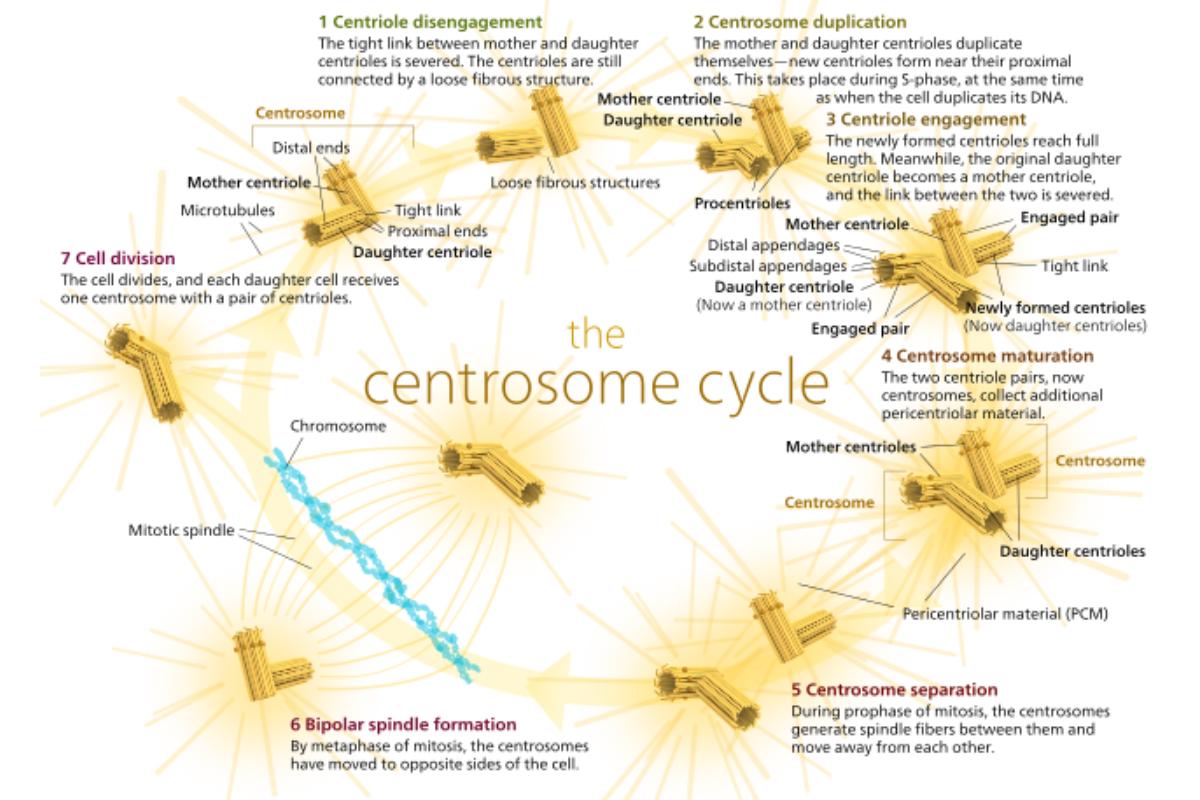What Is a Centrosome and Its Function?


The centrosome is an essential organelle in animal cells which plays a crucial role in various cellular processes. While research has revealed to us its importance, the study of its function and structure is an ongoing process in the field of cellular biology. Centrosomes are composed of two centrioles, cylindrical structures located in the center of the organelle and oriented perpendicular to each other. It is currently believed that the main function of the centrosome is the organization of microtubules and the promotion of tubulin polymerization, allowing the formation of the mitotic spindle during cell division.
In this thedailyECO article asks what is the centrosome and its function? In addition to learning what the centrosome does within the cell, we also look at its structure and any other important uses for animal cells.
What is the centrosome in animal cells?
Previously known as the cytocenter, the centrosome is a structure close to the cell nucleus that plays a crucial role in cell division. In animal cells, the centrosome consists of two centrioles, cellular structures composed of microtubules. These centrioles are of great importance, since they contribute to the formation of the mitotic spindle, a structure in eukaryotic cells which is necessary for cytokinesis.
Although centrosomes do not have their own membranes, they are associated with the nuclear envelope (i.e. the membrane of the nucleus). It is important to note that the two centrioles that make up the centrosome are paired and immersed in a set of proteins called pericentriolar material. This pericentriolar material is an optically dense material made of proteins..
Learn more about the function and structure of the cell membrane with our article on what is the plasma membrane?

What is the centrosome function?
As we have stated in the introduction, we do not necessarily know all the functions of the centrosome in animal cells. However, we do know some of the functions centrosomes are known to carry out. They can generally be divided into either primary or secondary functions:
Primary functions of centrosomes
- Microtubule organization: the centrosome plays a critical role as the microtubule organizing center. Its main function is to organize and promote the polymerization of tubulin, the main protein of microtubules.
- Segregation of chromosomes: during cell division, centrosomes participate in the formation of the mitotic spindle which connects the chromosomes to the poles of the cell. This is essential to achieve equal segregation of chromosomes in the daughter cells.
Secondary functions of centrosomes
- Maintenance of cell shape: centrosomes play a role in maintaining cell shape.
- Cellular movements: they participate in membrane movements, since they are related to microtubules and other components of the cytoskeleton .
- Genome stability: recent studies suggest that centrosomes are also involved in genome stability.
As we now know, centrosomes are only found in animal cells. Discover more about these distinctions with our article on the difference between plant and animal cells.
Centrosome action during the cell cycle
The primary functions of organizing microtubules are carried out my the centrosome during the cell cycle. This is the cell cycle known as cell division where the cell replicates itself. The centrosome is not necessarily active during the entire cycle, but it is particularly important during the following phases:
Gap 1 phase (G1)
During the G1 phase of the cell cycle, each cell contains a single centrosome. When the cell enters S phase and DNA replication begins, centrosome replication also occurs. In this phase the centrioles of the centrosome lose their orthogonal arrangement.
Synthesis phase (S)
At the beginning of the S phase, centriole duplication begins, duplicating both the mother centriole and the daughter centriole. During this phase, structures called procentrioles form. At the end of the S phase, procentriole elongation occurs.
Gap 2 phase (G2)
During the G2 phase, a separation of the two original centrioles and their respective forming procentrioles occurs. This separation gives rise to the distribution of pericentriolar material, resulting in the formation of two centrosomes.
At the transition between G2 phase and M phase, a major change occurs in centrosomes known as centrosome maturation. Before the process of cellular mitosis, centrioles begin to recruit more pericentriolar material. For example, an increase in the number of γ-tubulin rings occurs, which increases its ability to generate microtubules.
Mitotic phase (M)
During M phase, centrosomes play a critical role in the formation of the mitotic spindle. From the pericentriolar matrix of each centrosome, microtubules are formed that extend and connect with the kinetochores of the chromosomes (kinetochore microtubules) or cross-link with other microtubules that originate from the opposite centrosome (polar microtubules). The plane of cell division by which the mother cell divides in two is always perpendicular to the axis of the mitotic spindle and is generally equidistant between the two centrosomes.
Discover more about how cell division works with our article on the difference between eukaryotic and prokaryotic cells.

Centrosome structure
The centrosome and centriole are cellular components that can often be confusing to students of cellular biology. Based on the concepts that we will develop below, it will be easier for us to recognize and differentiate between them.
A centrosome consists of two centrioles or diplosome (2 centrioles), located in the center of the centrosome. The structure of centrioles is similar to that of the basal corpuscles of cilia. The centrioles are oriented perpendicular to each other and are cylinder-shaped, with walls composed of nine triplets of microtubules. They do not have a central microtubule, forming the structure called 9+0. The microtubule triplets are linked by a bridge of the protein nexin.
Microtubules in the centriole are divided into three types:
- Microtubule A (internal): has a circular section (13 protofilaments) and is closer to the axis of the cylinder.
- Microtubule B: is located between microtubules A and C. Its section is crescent-shaped and shares three protofilaments with microtubule A.
- Microtubule C (outer): has a crescent-shaped section and shares three protofilaments with microtubule B.
The set of centrioles and pericentriolar material is called the Microtubule Organizing Center (COMT). Another relevant structure is the aster which consists of fibers made up of microtubules that grow and organize in a radial pattern around the centrosome. Aster microtubules give rise to achromatic spindle microtubules during cell division.
Now that you know the function of the centrosome and its structure, you may also be interested in these other articles on the cytoplasm and its function or the smooth endoplasmic reticulum and its function.
If you want to read similar articles to What Is a Centrosome and Its Function?, we recommend you visit our Biology category.
- Bornens, M. (2012). The centrosome in cells and organisms. Science, 335, 422-426.
- Fu, J., Hagan, I. M., & Glover, D. M. (2015). The centrosome and its duplication cycle. Cold Spring Harbor perspectives in biology, 7, a015800.







